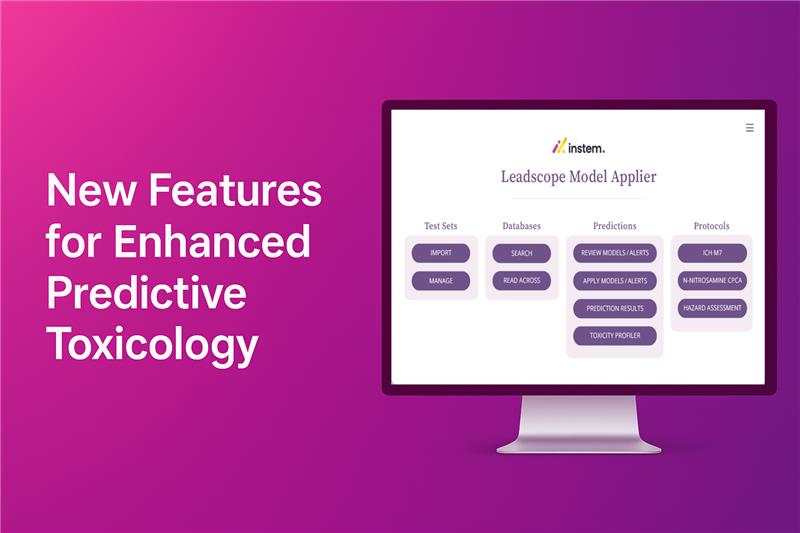Instem’s Leadscope Model Applier version 2025.0 introduces enhancements to in silico toxicology, advancing approaches to chemical risk assessment and regulatory compliance. This blog details the newly released features through a scientific lens, with a focus on their impact on predictive accuracy, mechanistic interpretation, and regulatory application.

Q1: What is a toxicity profile, and how can tools like Leadscope’s Toxicity Profiler help identify chemical hazards?
A toxicity profile is a comprehensive summary of the known or predicted adverse biological effects associated with a chemical substance. It integrates data across multiple endpoints, such as acute toxicity, genotoxicity, carcinogenicity, reproductive toxicity, sensitization, and more; to provide a holistic view of a substance’s potential hazards.
Leadscope Model Applier’s Toxicity Profiler provides integrated views across multiple toxicity endpoints, combining experimental data with statistical predictions and expert alerts. The Toxicity Profiler leverages Leadscope’s database of over 500,000 studies and prediction models to generate a multidimensional profiling of a chemical’s potential to assess potential genotoxic and non-genotoxic effects. This enables the identification of high-risk compounds and their structural liabilities.
Q2: Can acute toxicity be reliably predicted using computational models?
In silico models have demonstrated increasing utility in predicting acute oral toxicity and have been shown to be fit for purpose (e.g. in the derivation of GHS categories or dangerous versus non-dangerous goods).
Leadscope Model Applier 2025.0 significantly expands its acute toxicity data set with 2,000+ new curated records from ECHA REACH dossiers, improving statistical robustness. The release also includes new CLP-aligned models and alerts for acute rat oral toxicity. This aligns the predictions with CLP regulations in the European Union, where category V is not formally adopted.
Q3: What is the role of skin sensitization models in chemical risk assessment?
Skin sensitization in silico models play a critical role in chemical risk assessment by providing reliable, mechanistic-based predictions that reduce the need for animal testing. With regulatory frameworks encouraging non-animal approaches, in silico tools like Leadscope Model Applier 2025.0 offer enhanced predictive power through expanded datasets and model performance.
Q4: How do read-across approaches support N-Nitrosamine risk assessment and the derivation of acceptable intake limits?
The Carcinogenic Potency Categorization Approach (CPCA) is used to determine the Acceptable Intake (AI) limits for N-nitrosamines when experimental data are lacking. The Leadscope Model Applier provides accurate reporting of the CPCA potency categories and their associated AI limits based on the latest guidance from authorities. Read-across provides an additional layer of analysis; whereby, analogs with established AI values or with adequate carcinogenicity data are used to support or refine the CPCA category. The Leadscope Model Applier 2025.0 enhances this process by integrating the CPCA directly into its read-across tools, enabling the identification of relevant analogs using local similarity metrics. This mechanistic and potency-based alignment strengthens confidence in AI derivation, ensuring that risk assessments are both transparent and consistent with regulatory expectations for nitrosamine safety evaluations.
Q5: Where can I access the full release or request further technical details?
To request a technical demonstration please contact: [email protected]
Conclusion
The 2025.0 release of Leadscope Model Applier represents a convergence of mechanistic toxicology and computational advancement. With new chemical profiling capability, and deeper mechanistic insight, it is a critical platform for supporting evidence-based risk assessment.
Please contact us to speak to an expert or learn more about our solutions here.

